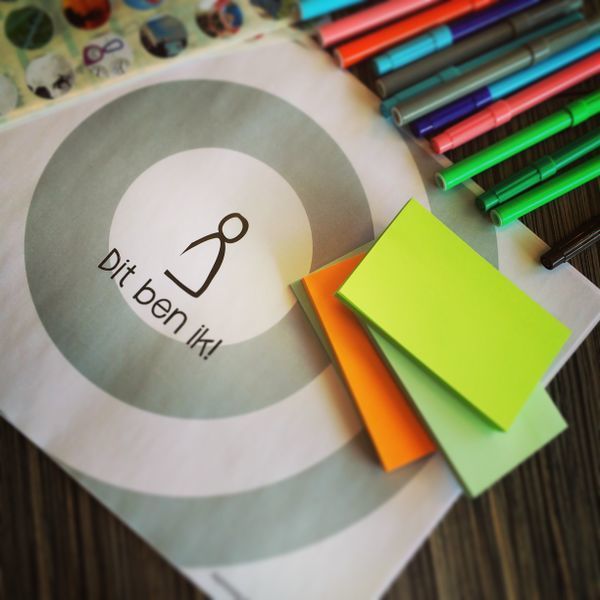Design for Child Oncology
Roos Tigchelaar & Fenne Verhoeven
Introduction
Cancer is the main cause of death among Dutch children. Adequate exercise and a diverse food repertoire increases their survival chance, but for many seriously ill children this is difficult, since they are too exhausted (Brinksma, 2014). Most of the existing research in oncology focuses on methods of treatment such as chemotherapy and radiotherapy. So far, few research projects have concentrated on supportive cancer care for children. Therefore, we have been conducting a ‘research through design’ project to design, implement and evaluate interventions that stimulate adequate food and exercise behaviour among children with cancer and their families. Our project is entitled POKO (Dutch acronym for Participatory Design for Child Oncology). POKO is a three year- funded project (September, 2013-December 2016).
Team
Since our start in September 2013, five Dutch design agencies, three researchers of the Utrecht University of Applied Sciences and over 50 students have been involved (research group Co-design). The department of Pediatric Oncology of the University Medical Center Groningen in the Netherlands served as our case environment. Besides the multidisciplinary parties already mentioned, all relevant stakeholders were involved in the design process: children with cancer, their parents and health care providers (dietician, physical therapist, oncologist, nurse, pedagogic expert, food assistant).
Approach
We deployed the ‘double diamond’-approach in the two phase project, diverging in the first and converging in the second phase. In the first phase we created 14 interventions aimed at stimulating eating and exercising among children with cancer. We used creative and visual methods such as photo assignments, and diary methods, which allowed all stakeholders to communicate on the subject, not impeded by emotions or barriers due to jargon, discipline or age. In the second phase, we selected and evaluated the most promising interventions in daily clinical practice. Interventions were selected based on validated criteria (based on the literature and expert meetings). Interventions Illustrative and most promising interventions are:
(*) Food ahoy! (Link to www.dereisvanvijf.nl): a pirate game for children between four and ten years of age. The aim of the intervention is to create a positive association with food, reduce stress among parents regarding food intake, and stimulate a diverse food pattern. In the game, children and their families travel around the world guided by a treasure map. Visiting different continents of the world, participants have to fulfill exciting food-related tasks.
(*) “Taste lab”: Part of the breakfast- and lunch trolley in the hospital was transformed into a ‘food laboratory’ that can be brought to the children so they can experiment with new flavors in a playful way;erst zeggen wat het is
(*) Blox.: A set of colored foam blocks. Herewith, the children can transform their hospital bed for instance into a hut. This intervention stimulates the creativity of children and gives them a chance to have influence on the sterile child oncology ward;
(*) Racemat: This mat of foam can you use to play a Mario Kart game, which you can control by laying on a mat with sensors in it, leaning from one side to the other, physical condition is improved. The Racemat encourages children in a lower energy level to avoid inactivity.
(*) Kidkit: This cardboard box contains a lot of assignment cards with suggestions, assignments and games to make physically exercising more fun. Parents, children and professionals of the department can supplement the box so it contains up to date.
Road ahead
We have delivered results at three topics: knowledge on the phenomenon of child oncology and food, design process and interventions.
Phenomenon/existing knowledge base: Insight was gained in the motivations/ experiences regarding eating and exercising among children having cancers and their stakeholders;
Design Process: Designing with so many stakeholders for such a complicated problem is complex. We obtained insight in what to do and what absolutely not to do when performing participatory design for child oncology.
Interventions: The most promising interventions of POKO, are the Reis van 5 and the Racemat. Currently, these are further developed in startups and researchers of the project-team are holding a quasi-experimental study in practice. We also hope to do a descriptive study with the Kidkit and Tastelab.
Results on these three levels will be incorporated into a toolbox that will be launched December 1st, 2016 at www.poko.hu.nl
Acknowledgements
This project was partially funded by a grant stimulating collaboration between creative industry, science, and education (Ucreate) and by RAAK Publiek.
Panton, 4Building, Christa van Gessel Research & Strategy, LaSenzo and Kaliber are the five involved design agencies.
